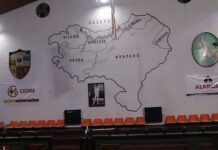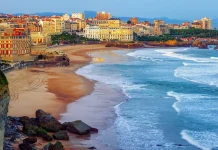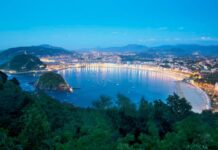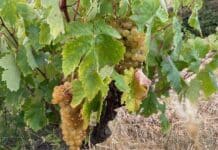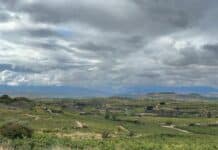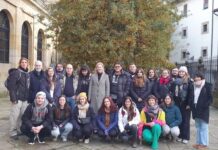We’ve been waiting to publish our entries on the Day of the Basque Diaspora in order to end the 2021 edition with an event in which the Basque Government, with the Lehendakari at the front, paid homage to the Basque community in the world. We thought it the most logical, even if it meant having to wait a few days to publish the entry.
This year, we’ve prepared three entries to pay homage to and remember the Basques all over the world. These entries were prepared jointly with the Limako Arantzazu Euzko Etxea – Lima Basque Center meaning we were fortunate enough to have top-level collaborators with us.
-
-
- The greeting to the Basque community abroad from Jesús María Aristín, bishop of the Apostolic Vicariate of Yurimaguas, which has been entrusted since its founding a century ago to the Basque Passionists;
- The video in which historians Jean-Claude Larronde and Luis de Guezala analyze the anti-colonialist beliefs of Sabino de Arana y Goiri;
- and two videos about how the Colegio de San Ignacio de Loyola – Vizcaínas school lived through Mexico’s struggle for independence, sent to us by Dr. Ana Rita Valero de García Lascuráin, director of the Historical Archives of the Colegio de San Ignacio de Loyola-Vizcaínas; and Dr. Lizzeth Armenta, curator of the Museum of the Colegio de San Ignacio de Loyola-Vizcaínas.
-
We would again like to take advantage of the opportunity name all these people, and thank them for their collaboration and hard work.
Now that our part is done, we’ll close off this series of articles with the official Day of the Diaspora event.
We’re including two videos. One is dedicated to the Diaspora, and the other to the event in which the Lehendakari, the Secretary General of Activity Abroad, and the Director for the Basque Community Abroad take part.
Video Euskal Diasporaren Eguna 2021
Official Event, Euskal Diasporaren Eguna 2021
The text of the Lehendakari’s speech here (english)
Exhibition, Basques In California
Logo Exposición Basques In California
The Basques in California Exhibition opened in Vitoria-Gasteiz on September 8, the Day of the Basque Diaspora, and includes explanatory panels and display cases with objects that come from the Basque Museum in Boise, Idaho. Completing the exhibition are the rich archives of the Sancho el Sabio Foundation, the largest document archives on Basque culture. So, to the original exhibit, seven panels with their respective display cases have been added which go even deeper into the presence of those from Álava in California. Completing the journey from the 18th century to our times, these displays include a general bibliography on the topic, in Basque, Spanish, and English.
But it also gets more specific, such as biographies and writings from the two most relevant Alavans in Upper California, Fermín Lasuén and Diego de Borica. In addition to this, there is original documentation from the time, such as the Royal Letter from King Charles IV naming Borica the political and military governor. Given the importance of Alavans in the Franciscan missions in Upper California, the specific biography about their presence in the area is also included. They established missions in this part of the United States, which were the seeds of great modern-day cities, such as Santa Barbara, San Jose, or Santa Cruz, as can be seen in the map shown in one of the panels.
What’s more, the Alavan Franciscans contributed by introducing the grape to this part of the United States, which currently produces one of the most important wines internationally. That is why bibliographical studies about wine in the Alavan Rioja and California have been included. These Alavans have lived on in our collective memory to this day on both sides of the Atlantic. Therefore, in addition to having a street in Vitoria-Gasteiz, they were also honored in both Álava and the United States, as images and documents show.
In the United States, as well, several streets recall Alavan people or events related to them, as can be seen in some of the photos on display. But the Alavans were not only in California. One of the case, with its panel, shares the story of Jesús Galíndez and his mysterious disappearance. So, original works by this person are on display, as well as the investigations carried out about him, and press articles raising up his figure as a symbol of freedom. As a matter of fact, that source, the press, has been analyzed in depth.
One of the panels shows a good number of articles that appeared in the only two newspapers that were published completely in Basque in the United States, Escualdun Gazeta and Californiako Eskual Herria. The presence of Alavans in California can be seen in them. Finally, the Alavan contribution to California in the 21st century is explored, from researchers presenting their projects at the great technological center that is Silicon Valley, to movie directors and professors who, one way or another, have been linked to several prestigious universities in that state.
Last Updated on Sep 29, 2024 by About Basque Country




